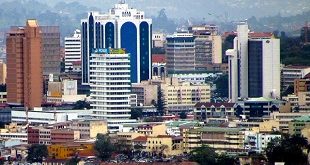How racial subjugation and violence is the grease that drives the wheel of the USA
There has always been crime in black communities in America but not the system of mass incarceration we see today. In 1964 (three years after the birth of Obama) white people constituted 70% of America’s prison population, blacks less than 25%. Today white people are less than 30% of the prison population, blacks 50% and Hispanics 20%. How did this change come about?
Mass incarceration was a response to the gains of the civil rights movement by those who sought to reverse them. Today, it is no longer socially permissible to use race explicitly as a justification for discrimination, exclusion and social contempt. Instead, today the system uses the criminal justice system to label poor black people criminals. Once one is labeled so, then the system can blatantly engage in all the practices of discrimination that had previously characterised slavery and Jim Crow. What has changed since Jim Crow is not necessarily the basic structure of American society but rather the language that is used to justify it.
In America today, it is perfectly legal to discriminate against criminals in nearly all the ways in which it was perfectly legal to discriminate against black people during slavery and Jim Crow. Once labeled a felon, all the old forms of discrimination like denial of voting rights, exclusion from jury service, discrimination in employment and public housing etc. suddenly become legal. Basically, once you have a criminal record you are like a black man in Alabama in 1940. The point is simple but fundamental: America has not ended racial discrimination. It has simply redesigned it.
Thus, when you get out of jail, you cannot get a job, in many states you cannot vote, you are denied access to public housing, you are denied a scholarship to study, you are denied food stamps etc. The few who manage to get jobs, up to 100% of their salary can be garnished to pay for their prison time, court fees and legal costs. So how does the system expect such a person to survive? Well, they commit another crime and then go back to jail. So the system keeps shuffling black people in and out of jail.
There is a profit angle to this tragedy. Many prisons in America are owned by private corporations that are listed on the New York Stock Exchange (NYSE). The prison industry in America is the largest employer – employing more people than the combined workforce of America’s largest corporate employers – Walmart, General Motors, and Ford. If America were to reduce her prison population to its 1980 number (300,000 compared to 2.3m today), over one million people would lose their jobs and private companies that own prisons and are listed on the NYSE would go bankrupt.
Police in America is the main contact between the state and poor black people. Instead of building better schools, hospitals and creating jobs in black communities, America builds prisons for them. America spends nearly $300 billion on prisons per year. With such a financial war-chest, police stalk black neighborhoods daily hunting for young poor black males to send to jail.
Many of these police operations are funded by corporations that own prisons under the guise of “Corporate Social Responsibility”. The more prisoners they get, the higher the corporate profits – and share price on the NYSE. Consequently, everyday scores of black youths are moved from poorly funded and collapsing public schools to well funded high tech prisons. In conducting this racist campaign of terror against black people, police in America have been aided by Congress and the U.S. Supreme Court.
The U.S. Congress and state legislatures have passed draconian anti-drug laws including lengthening the jail period for minor criminal offenses. In nearly all its rulings, the U.S. Supreme Court has eviscerated the 4th Amendment protection against unreasonable searches and seizures and literally granted police a license to constantly stop and search and send scores of black people to jail. Plea Bargaining has allowed U.S. prosecutors to achieve a conviction rate of 95% – unheard of anywhere in the world. The federal government has given police large quantities of military hardware including Apache helicopters, armored personnel carriers and other lethal weapons to combat drugs i.e. to terrorise black communities.
This campaign of terror has only succeeded because it targets poor black people. White police know that if they stalked white neighborhoods (or rich black neighborhoods) for victims of their relentless hunt for people to send to jail, there would be a political backlash. Many Americans would object to this racial injustice. The system uses its weapons of mass propaganda, especially television, to create an impression that crime in America is black.
Watch evening television news and you will be bombarded with images of black people being rounded up for one crime or another. Crime movies, documentaries, and reality TV are filled with stories of suspects in almost every crime being “black males.” This campaign has been so successful in creating this social consciousness that even black people believe crime is black. Thus black communities cannot ask for and get decent schools, hospitals, or jobs. Instead all they get are more police violence and prisons.
Both Republicans and Democrats have contributed to this tragedy. Indeed many of the draconian laws that have sent millions of black youths to jail and later denied them federal aid for school and banned them from public housing and food stamps were actually championed by the Bill Clinton regime. Clinton was desperate to win back poor white swing voters in the south who had defected to the Republican Party in the wake of the Lyndon Johnson government supporting the passing major civil rights legislation in 1965.
But to appreciate how much America has not changed its racial attitude, we need to recall the 1787 “Three-Fifth Compromise”. This was a compromise reached between the delegates from the slave holding southern states and those from the north. The issue was whether to count slaves in determining the population of an area. This decision was important because population size determines the number of legislative seats. Slaves were not voters but it was agreed that a slave would be counted as three-fifth of a human being. The effect was to give southern states a third more seats in Congress. This is how slave-owner interests came to dominate the government of the USA until slavery was abolished.
Today, the U.S. constitution limits the size of the House of Representatives to 435 members. Because populations of many areas keep changing, America is always re-demarcating districts (legislative constituencies). In America prisoners are counted as part of an area. However, they are not allowed to vote. So, all too often, prisons are built in rural rust belt states occupied largely by white people. The presence of large numbers of black prisoners qualifies such areas for a congressional district in the same way the 1787 “Three-Fifth Compromise” on slaves did. So blacks in prison are counted but are not allowed to vote. This is one way through which the prison system has been used to bolster the congressional weight of, especially, the Republican Party.
From the foregoing, we can conclude that America’s democratic institutions and their underlying economic structures are the means through which racial injustice is designed, sustained, and reproduced. Therefore they are not capable of ending it. They can only keep repackaging it under different forms and names. Indeed, America’s democratic institutions failed to end slavery. They sustained it. It took a gruesome civil war lasting four years and costing 600,000 lives to end it. Even then, the Emancipation Proclamation was a dictatorial decision by a president using emergency powers. America will need another endogenous or exogenous shock if it is to ever think of ending racial injustice against its black citizens.
 The Independent Uganda: You get the Truth we Pay the Price
The Independent Uganda: You get the Truth we Pay the Price



strong and passionate argument you make Andrew. I would have it differently though. That capitalism is a caste (racial) system. I will borrow from your very source of William Julius Wilson, that after controlling unemployment, the differences in crime rates between white and black communities disappeared. A similar story has been told in Rwanda (Okweitura) where Hutus bought royalty by amassing wealth yet the Tutsi where relegated to the social status as that of the Hutu because of their poor economic standings (heard of the “moderate Hutu?”) I have lived in both the U.K and U.S and a homeless white would suffer the safe consequences as the homeless black.
Andrew, you make some very nice points, but racial relations in America are more complex than these simplistic and lacking in detail historical descriptions. 1) Yes, there are flaws in the American Democratic system, but to fill your write-up with these nuggets of truth really downplays the complexity of racial relations. 2) Your major premise is flawed and needs rethinking. There are multiple perspectives that can explain black crime and its evolution.
We have a tendency to hide behind the atatement “its more complex that that”… Please Tonny, tell us these “complexities”, in detail. We have the capacity to grasp them… Let them not be excuses for avoiding discussion.
Allan: I appreciate your comment. I am a regular at a conference series entitled “Race, ethnicity, and place (http://rep-conference.binghamton.edu/),” which opened my eyes and refocused my thinking. For context and additional discourse, please review the following perspectives: conflict theory, strain theory, social disorganization theory, macrostructural opportunity theory, social control theory, subculture of violence theory, and prosecutorial and police discrimination theory. Some references: Mass imprisonment and the life course: Race and class inequality in US incarceration by Pettit and Western 2004, American Sociological Review 69(2):151-169; Extremely disadvantaged neighborhoods and urban crime by Krivo and Peterson 1996, Social Forces 75(2):619-648; Social anatomy of racial and ethnic disparities in violence by Sampson et al 2005, AJPH 95(2):224-232; Structural variations in juvenile-court processing: inequality, the underclass, and social-control by Sampson and Laub 1993, Law and Society Review 27(2): 285-311.
You also remind Andrew that what he puts on paper becomes a fact only wen there’s a cited credible source, and not a single author of a single book.
What is complicated about racism and the discrimination of blacks in America is the systems, institutions and political tactics employed to make it thrive. Otherwise Its not that complicated to deduce that the current state of blacks in America is directly related to their experience of plunder , terrorism and deprivation through State agency for the benefit of whites based solely on skin color- nothing complicated about that!
Great points raised here. I also think that America has not done enough to stop this war on racism.
1.How come within a short time the biggest tax payers like Roofings,Ruperelia Group are now asking to be bailed out?
2.There are development partners like ADB,EADB that fund projects and charge reasonable interest rates why did they opt for local banks that charge high interest rates?
3.An independent audit firm should carry out an audit on theses firms before they are bailed out just to ascertain their worth e.g i was shocked to hear that Good African Coffee failed to supply coffee in Europe.this would not have happened if the coffee was being suplied by a country as opposed to an indivudal.